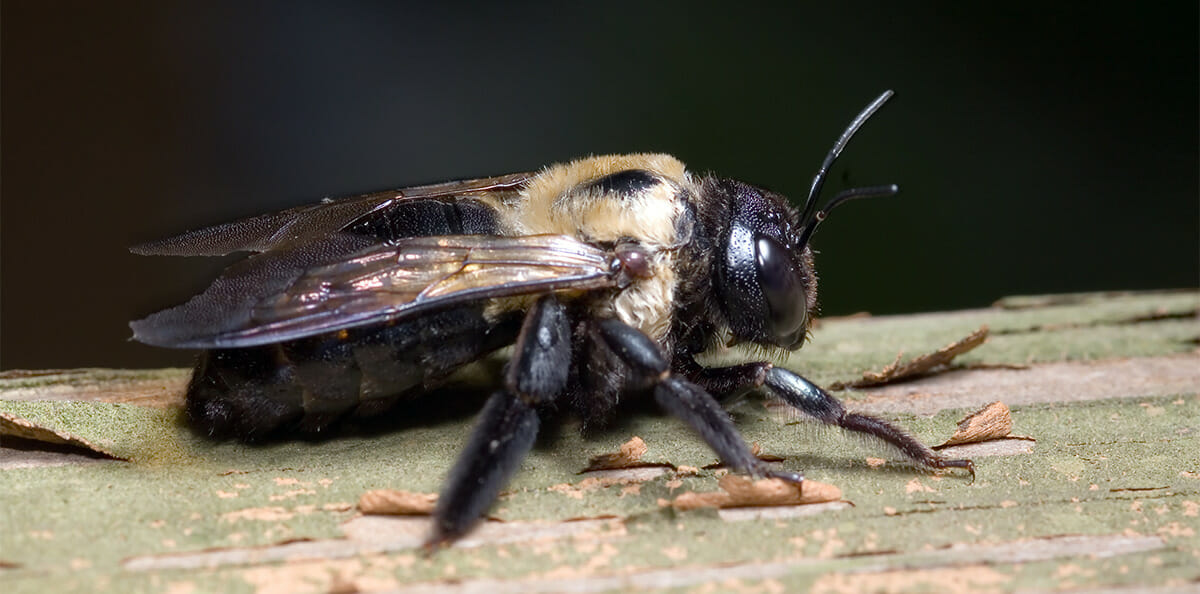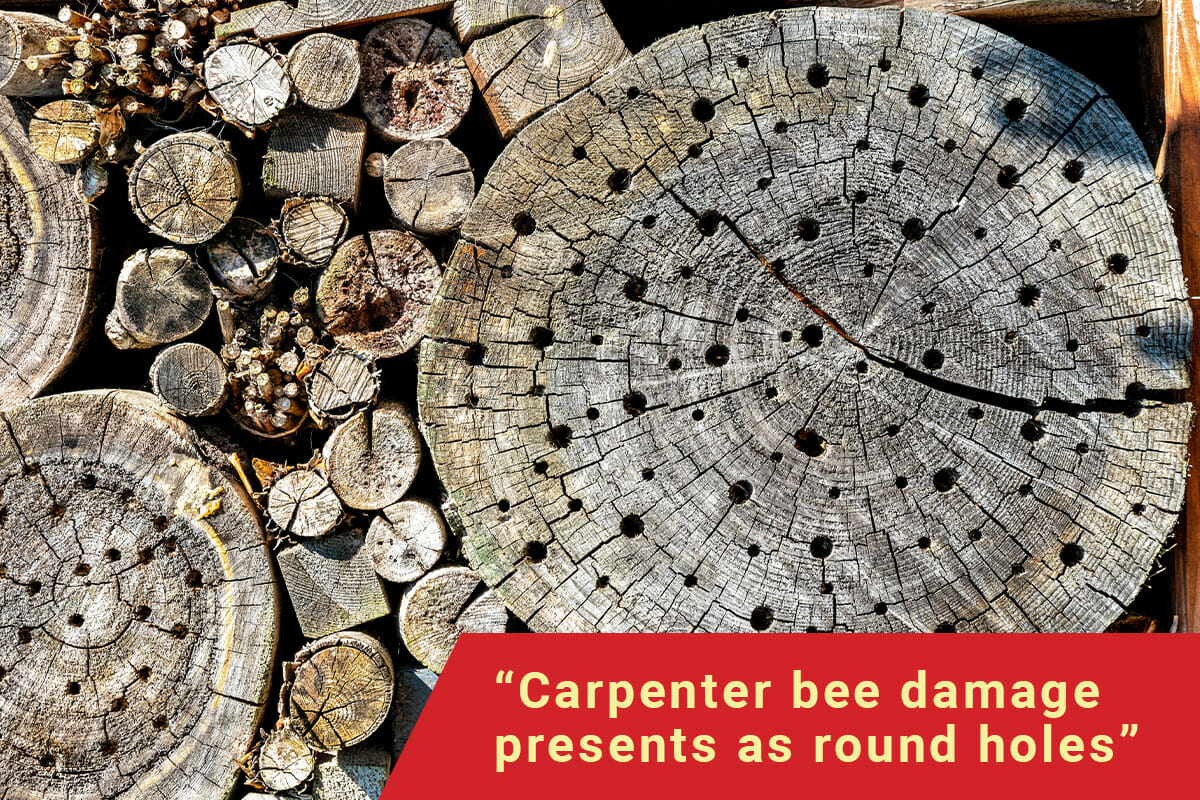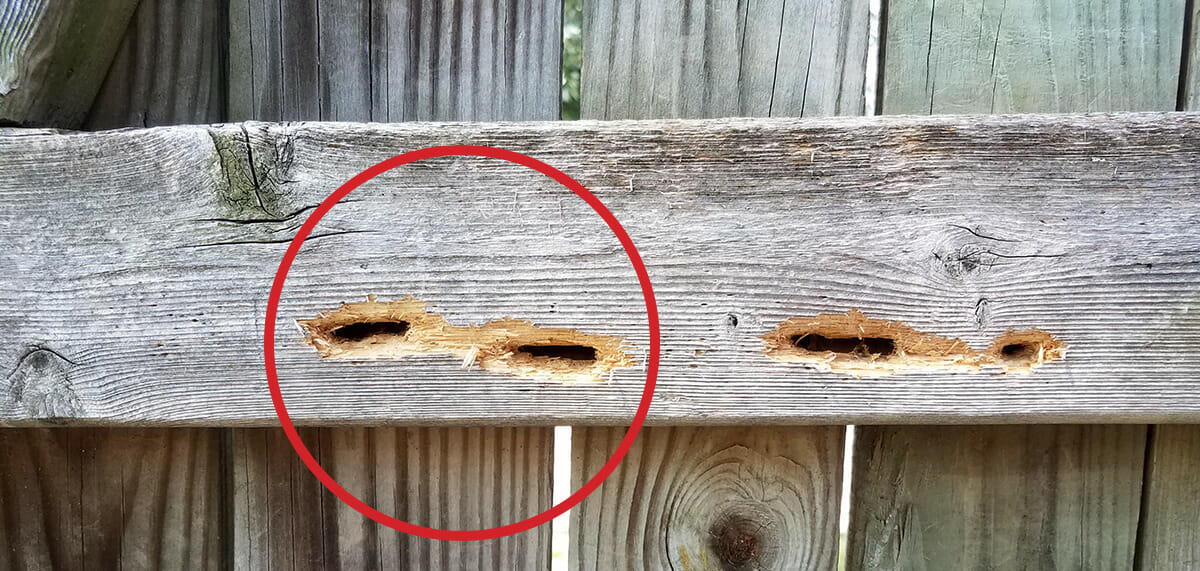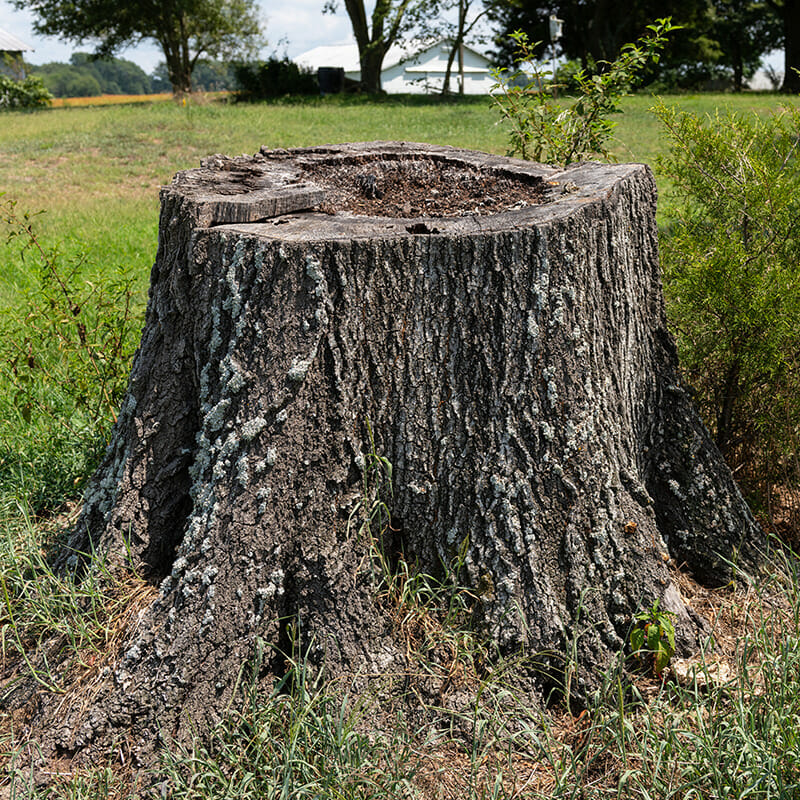Ways to Prevent Carpenter Bees
There are several ways to prevent carpenter bees from damaging your property.
Don’t leave wooden surfaces unfinished. One of the most effective ways to ward off carpenter bees is to paint or treat any wooden structures on your property with a varnish or topcoat, especially if they harden the surface of the wood. Carpenter bees prefer soft wood, and most finishes and paint create enough of a barrier to deter these pests.
Consider applying pesticides or DIY remedies. You can also use insecticides available at home improvement stores or natural repellents like citrus oil to deter carpenter bees. These pesticides and natural remedies aren’t always effective, though, and can be dangerous if applied incorrectly.
Remove dead and decaying wood. Rotting wood is easy for carpenter bees to bore into. Decaying logs, fallen trees, and stumps can all serve as breeding grounds for carpenter bees and other wood-destroying insects.
Plug carpenter bee nests. If you have an active infestation, you may be able to prevent bees from returning by plugging their nests. Once you’ve identified carpenter bee holes, fill them in with wooden dowels, wood putty, or caulk. After the nests are plugged, carpenter bees will be unable to enter or exit. This method can be effective for preventing a carpenter bee nest from growing, but it may not deter new bees from boring additional holes.
Use carpenter bee traps. Finally, you can install traps or netting around your property to prevent carpenter bees from nesting in your property. The traps mimic the ideal home for a carpenter bee — a soft pine box with a small hole — but siphon the bees into a bottle or jar attached to the bottom where they cannot escape. These carpenter bee traps and nets can be placed over the entrances to potential nesting sites, restricting access.





